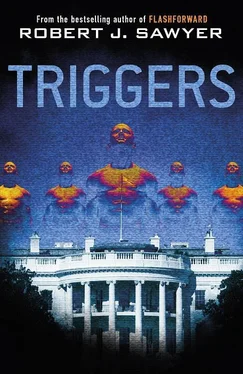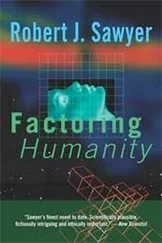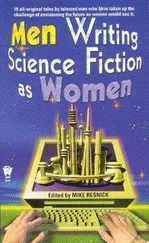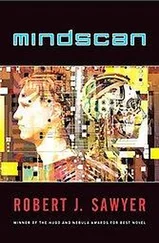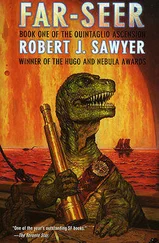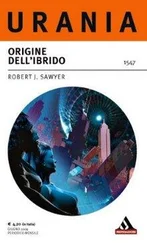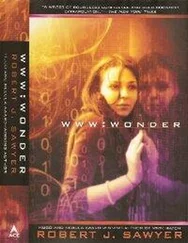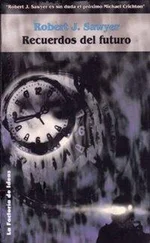Danbury’s house was small. Kranz was nosing around, looking on the bookshelves, which, from what Cheung could see, contained mostly military nonfiction and Tom Clancy novels.
Smith nodded, then said, “I guess when Danbury heard that agent calling out that Jerrison was still alive, Danbury must have realized he wasn’t going to be a martyr—his mission to take out the president was a failure. He probably hadn’t even planned an escape route at the Lincoln Memorial; he was all set to go out in a blaze of glory. Guy like that, a crack shot, probably never even occurred to him that Jerrison would survive.”
“I suppose,” said Cheung. “But when Jerrison did survive, Gordo panicked and ran—hoping to get away and find another way to earn his heavenly virgins.”
“But now that fucker is in hell,” said Smith.
Cheung found himself a chair, dropped into it, and looked out the window, out at the changed world. “Aren’t we all?”
The year Ranjip Singh’s family had moved from Delhi to Toronto, US television, which spilled over the border into Canada, was filled with “Bicentennial Minutes,” celebrating America’s past.
Years later, Canada started its own series of similar television spots called “Heritage Minutes.” Singh fondly remembered several of them, including Canadian Joe Shuster creating Superman, paleontologist Joseph Burr Tyrrell discovering dinosaur bones in Alberta, Marshall McLuhan electrifying his students at U of T with a lecture during which he coined the phrase “The medium is the message,” and a moving monologue by an actress portraying Emily Murphy, the first woman magistrate in all of the British Empire, who fought for the rights of Canadian women to be recognized as persons under the law.
But the one that caught teenage Ranjip’s attention most of all was about pioneering Canadian neurosurgeon Wilder Penfield, performing in 1934 what came to be known as “the Montreal procedure.” By touching electrodes to particular parts of his patients’ brains, Penfield could apparently reliably elicit specific memories. A phrase from that Heritage Minute—“I can smell burnt toast!” uttered by a female patient in astonishment when Penfield identified the source of her ongoing seizures—became a catchphrase in Canada, and Ranjip had been so fascinated by that little film, he’d ended up choosing memory research for his career.
All of this came to Susan Dawson as she waited in Professor Singh’s lab for Darryl and Dr. Griffin to get there. As soon as they arrived, she asked, “What’s the tally?”
Darryl showed her the list of names. “Nineteen, including you, me, Prospector, Dr. Griffin, Professor Singh here, and—” He looked at the other man in the room. “You’re Private Adams, right?”
“That’s me,” said Kadeem.
Darryl nodded. “We checked and double-checked: that’s everybody. Your runner—Orrin Gillett—was the only borderline case, as it happens; if he’s affected, the total is twenty.”
Susan frowned and turned to Professor Singh. “Do you see any rhyme or reason to the linkages we’ve already uncovered? Anything like, oh, say, you’re linked to the person who was closest to you, whether or not in line of sight? Or you’re linked to—I don’t know—the person who’s closest to you in age, or something?”
Singh shrugged; it seemed, Susan noted, to be his favorite gesture. “I’ve been looking for correlations, but none leap out. Certainly, it’s not simply distance. The attending surgeons were much closer to the president than Private Adams was, for instance. And if distance were the factor, the links would be reciprocal: A linked to B, and B to A.”
“So,” said Mark Griffin, standing up—he was a good ten inches taller than Susan, and he clearly wanted the advantage his imposing stature gave him—“once we isolate all the people on this list, we can end the lockdown and let everyone else come and go as they please, right?”
Susan looked up at him—and hated that she had to do that. But she supposed one didn’t get to be the head of a major hospital without learning a few power-game tricks. “Until we’ve actually identified who is reading President Jerrison’s memories, I don’t want to take any chances.”
“Agent Dawson,” said Griffin, “the record will show that Luther Terry Memorial Hospital immediately complied with your lockdown request. Our staff have been fully cooperative. However, this cannot go on indefinitely; if necessary I’ll call your superior. I believe that would be Director Hexley, no?” Susan had to give him his due: he was good at this; he’d prepared for the confrontation. “This is a hospital. We provide emergency services to a wide area, as well as extensive outpatient care. We can’t remain closed. And, my God, after what’s happened today, people here have a right to go to their homes, be with their loved ones, and try to find some way to get on with their lives.”
“They also have a right to have their national-security interests protected,” Susan said.
“Perhaps so. But you can’t keep everyone locked up, and we have to start letting new patients in. We’ve already had one near tragedy, Agent Dawson: a patient who would have been easily saved here was almost lost en route to Bethesda, when her ambulance was diverted there. And we’re extraordinarily lucky that no one was hurt in the explosion at the White House, but we have to be prepared to treat casualties if another bomb goes off here in DC.”
“I hear you, Dr. Griffin. Now, you hear me: we’ll try to get this done quickly; we’ll interview everyone on the list until we find out who is linked to the president. But I’m not letting you unlock the doors until we do, understand?”
Before Griffin could answer, Susan’s BlackBerry rang; her ringtone was the theme music from Inside the Beltway. “Dawson, go!”
“Hello,” said a male voice. “My name is Dario Sosso. I’m an FBI agent and I’m out at Reagan.”
“Yes?” said Susan eagerly.
“We got him.”
She blew out air. As Secret Service agent-in-charge of the presidential detail, she’d been getting continual updates about the situation at the Lincoln Memorial. Dirk Jenks’s absence had been noted, and she’d ordered him found and detained. Jenks, after all, was supposed to have checked the elevator at the Lincoln Memorial before Jerrison arrived; he might well have been an accomplice of Danbury. And it had been Jenks who had started the elevator when Danbury had gone off-script and tried to escape—apparently getting just the result he’d hoped for, bringing Danbury plummeting to his death.
“Thanks,” Susan said. “That he ran is proof enough that he was involved, but let me know if he reveals anything under interrogation, please.”
“Will do,” said the FBI agent. Susan terminated the call, looked at the people in the president’s hospital room, and suddenly found she couldn’t meet Darryl Hudkins’s gaze. One rogue Secret Service agent was bad enough. But two constituted a conspiracy. And it was anyone’s guess how big the conspiracy was.
Susan enlisted Professor Singh to help her interview the other potentially linked people: he’d speak individually to half of the remaining group, and she’d take the other half. They could have gotten through everyone even more quickly if she had the other Secret Service agents do interviews, too, but she didn’t know who among them she could trust. But Singh, who she recalled had enough psychology courses under his belt to know how to effectively question people, had no secrets from her, and she could access his memories of each interview once it was done; it was almost as good as being in two places at one time.
Читать дальше
